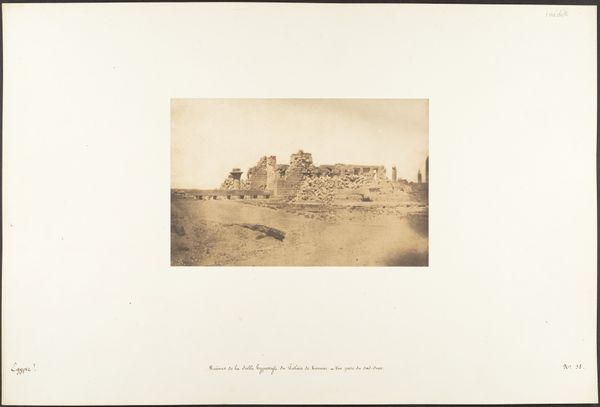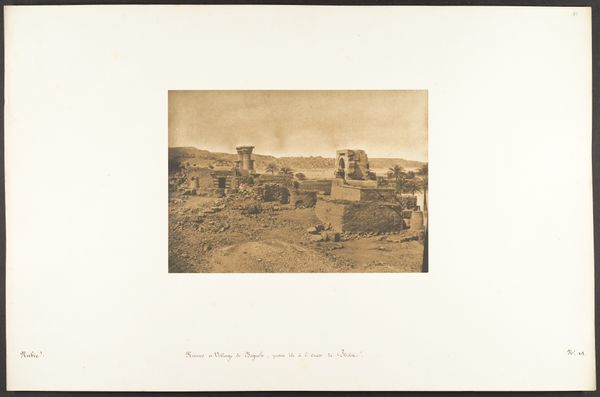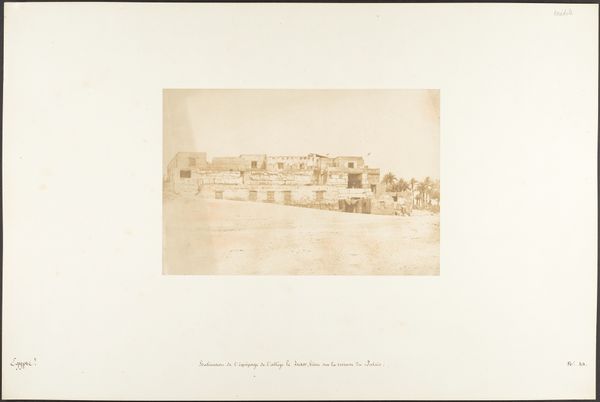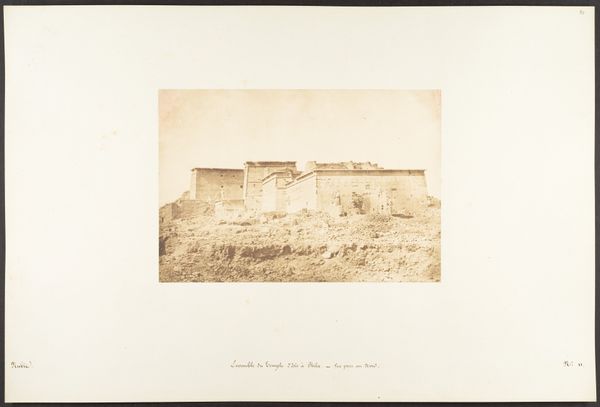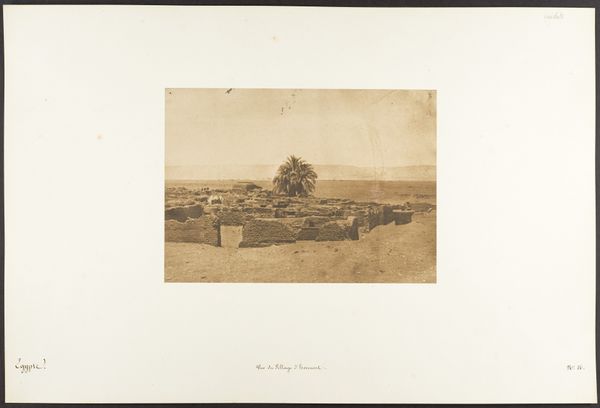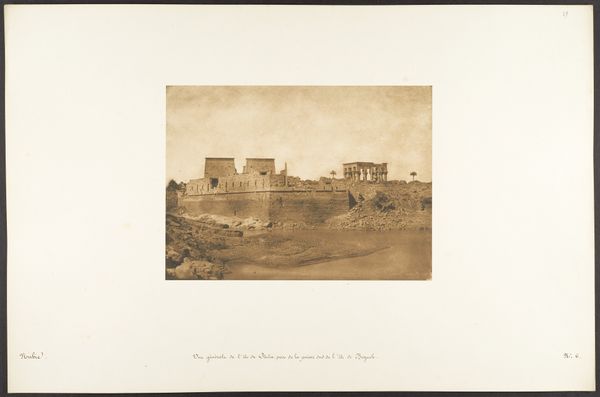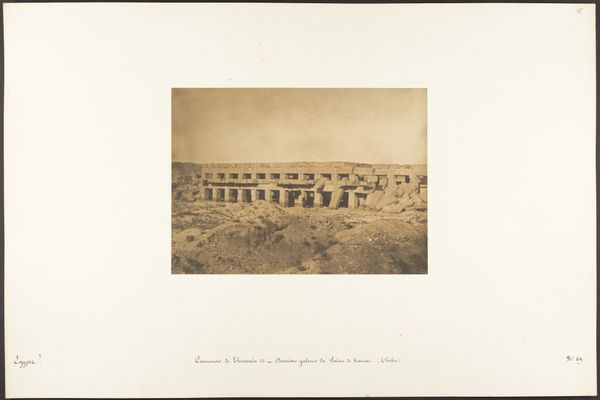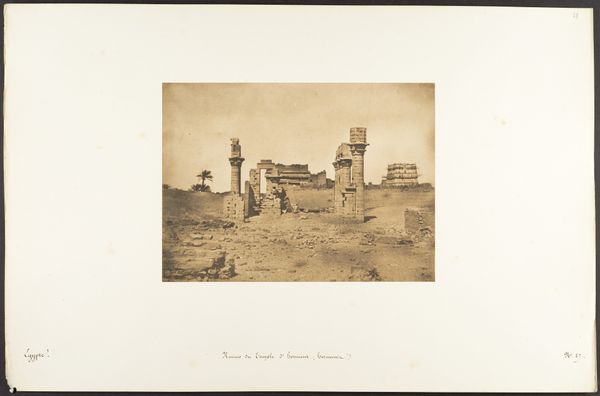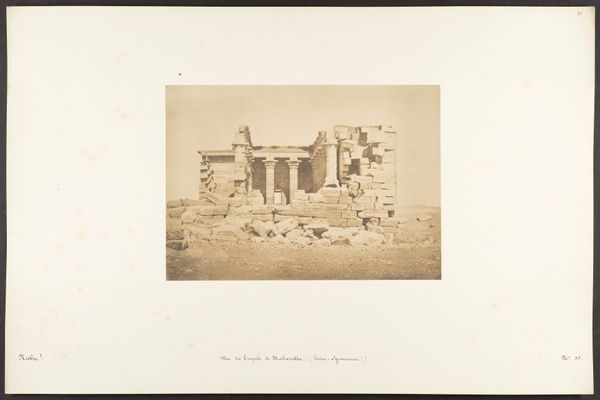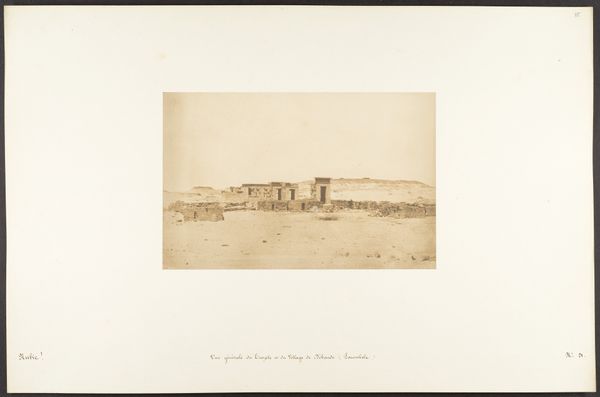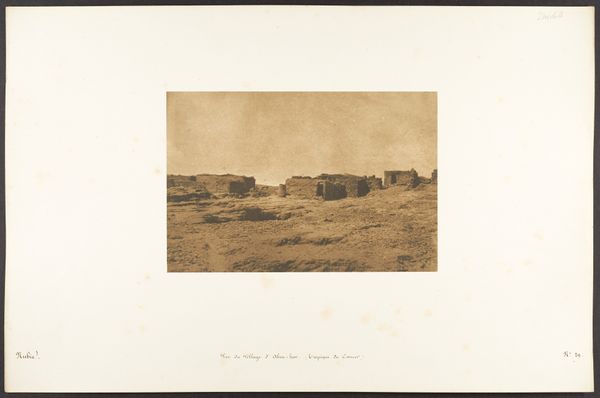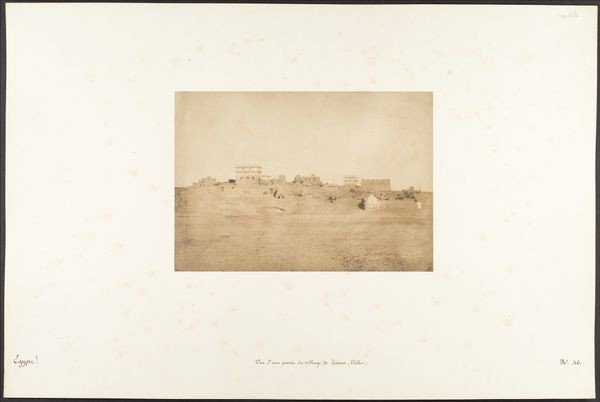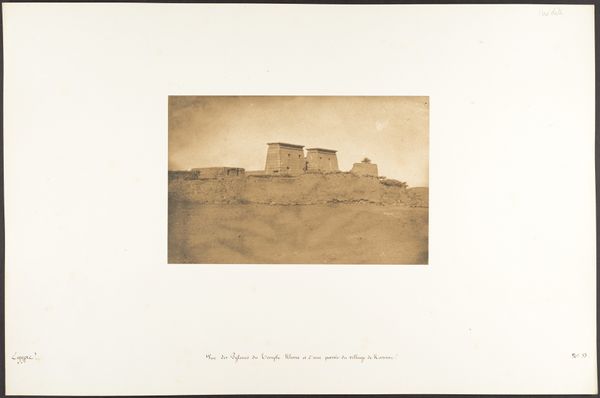
Porte méridionale de la Salle Hypostyle du Palais de Karnac (Thèbes) 1849 - 1850
0:00
0:00
photography, albumen-print, architecture
#
landscape
#
ancient-egyptian-art
#
photography
#
ancient-mediterranean
#
cityscape
#
albumen-print
#
architecture
Dimensions: Image: 6 in. × 8 3/8 in. (15.3 × 21.3 cm) Mount: 12 5/16 × 18 11/16 in. (31.2 × 47.5 cm)
Copyright: Public Domain
Editor: This albumen print by Maxime Du Camp, taken between 1849 and 1850, is titled "Porte méridionale de la Salle Hypostyle du Palais de Karnac (Thèbes)." It depicts the ruins of a massive stone structure. It's incredible to see this ancient architecture captured so early in photography's history. How should we understand this piece, focusing on its materiality and creation? Curator: Given its photographic nature, let's consider the material reality. What do we know about the albumen print process and how does that affect our perception of this historical subject matter? Editor: Albumen prints used egg whites, right? So the very materials are fragile, yet used to capture something seemingly permanent like architecture... Also, it was a pretty laborious process, I remember reading. How did this early photographic technology influence the experience of the viewers? Curator: Precisely. The albumen printing process, with its delicate and labor-intensive nature, contrasts with the monumental scale of the Karnak Temple ruins. The photographic process democratized access to seeing the previously unreachable architectural achievements of Ancient Egypt. Editor: It's also a stark landscape, hinting at the immense labor and resources poured into building something like this so many years ago, only to see it crumble eventually. How does Du Camp’s work inform our understanding of ancient Egyptian society and its relationship with labor? Curator: The image subtly reveals the colonial gaze and its methods of representing "ancient" civilizations through this medium. We need to consider who funded this work and their motives. Did they engage with local people involved? What processes did the artist use? What decisions made with framing and how it reflected a Western vision of this "ancient" structure are crucial to considering this piece through the lens of its materiality and production. Editor: That makes me wonder, if the method was different back then, how does that affect what we consider the intention, and then our own interpretation of this photo, compared to what they considered art "for the masses"? Curator: Exactly! By thinking through the material processes and socio-economic context surrounding Du Camp’s photograph, we gain new perspectives. Editor: It gives the image a new layer of meaning. Thank you!
Comments
No comments
Be the first to comment and join the conversation on the ultimate creative platform.
